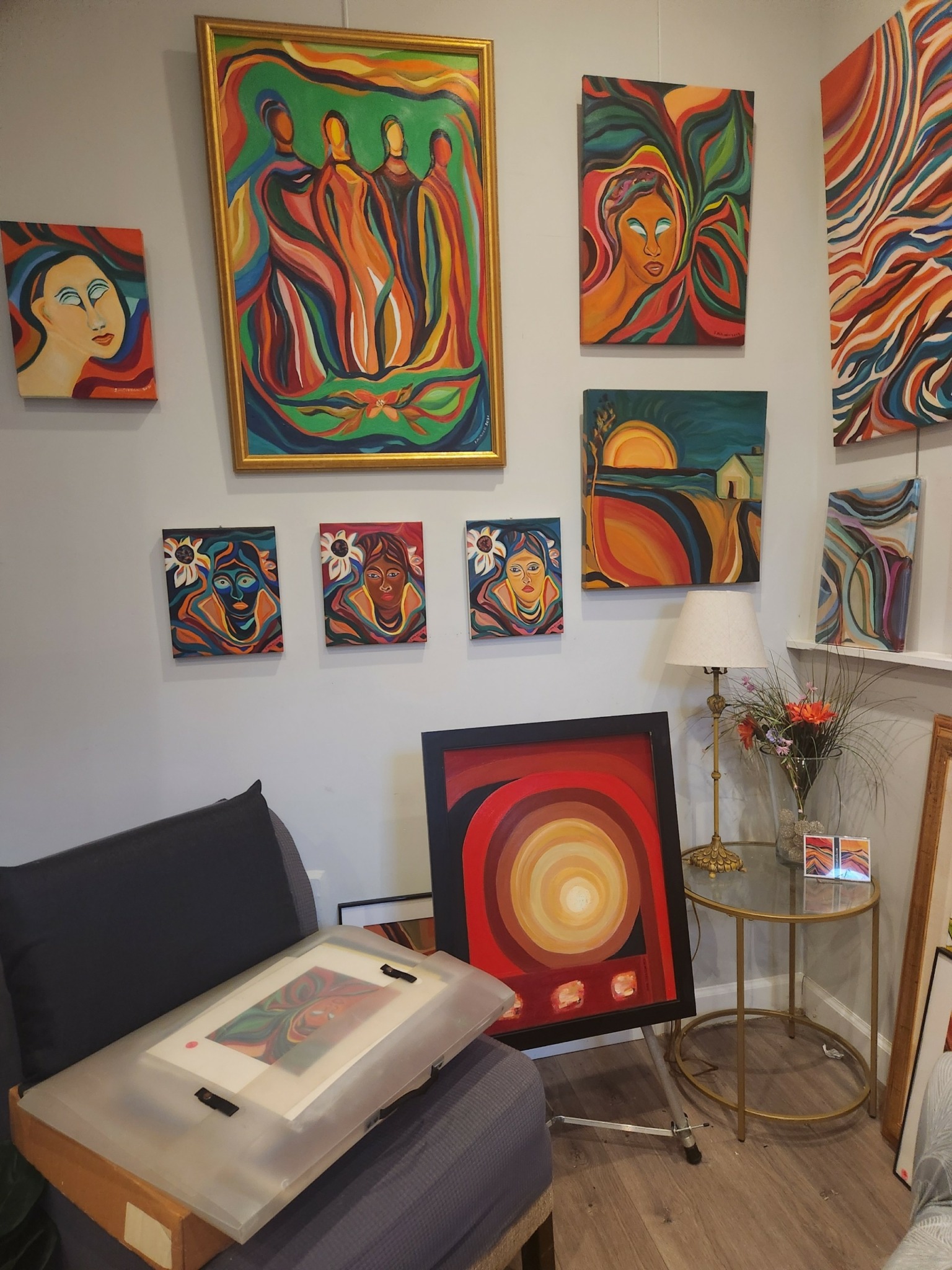We recently connected with Ida Mitchell and have shared our conversation below.
Ida, thanks for taking the time to share your stories with us today Can you walk us through some of the key steps that allowed you move beyond an idea and actually launch?
I paint wherever I can—usually in small corners of my home, where canvases stacked up and brushes shared space with everyday life. This is how I work, I get up often in the middle of early mornings to return to a painting. This is a private part of my work and it’s in my home. When I started selling my originals, people would come inside and I would have to make arrangements around the living room. It was not comfortable having people come into my house.
I found myself craving a space that was separate and could contain as much work as I could hang for show. Just outside my house was this small building that I used for a former business, tools, etc. Most people saw it as a storage space, nothing special. But every time I passed it, I imagined what it *could* be—a studio that housed my finished works.
I hired a contractor and told him, I wanted an open space, no more walls and as much light as he could give me. I did not interfere with his process and he gave me the space I needed without knowing what I was going to do. The walls colors were muted, so my colorful paintings stood out and the beam that was needed down the center of a wall, became the ideal shelf for small paintings to display.
Now, when I step inside, I feel a shift. People are surprised by the tiny studio of color. It’s full of possibility. It’s where my abstract work really comes alive—where colors mix on their own terms, textures unfold naturally, and the unexpected is always welcome. This little building became more than a studio. It became an extension of me.
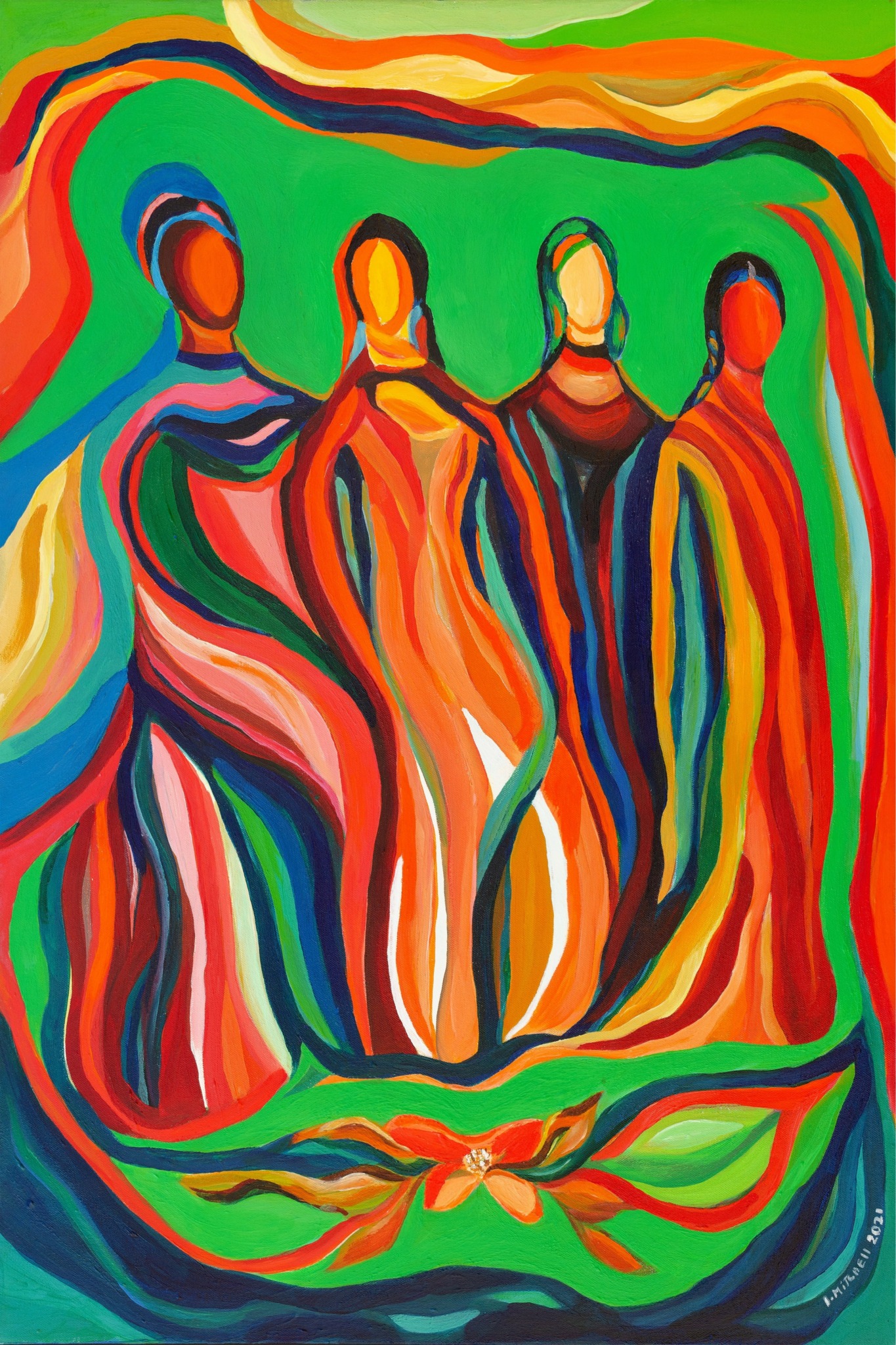
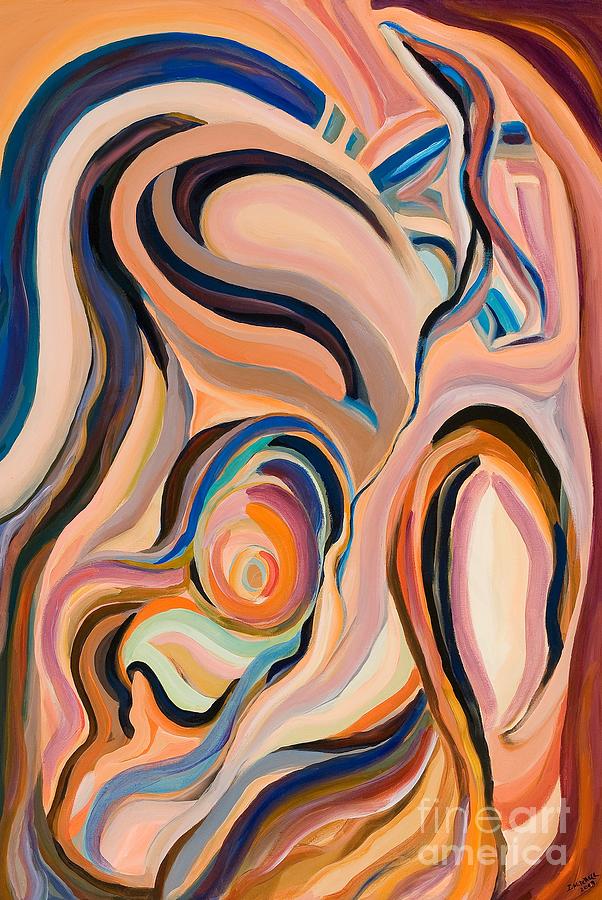
Great, appreciate you sharing that with us. Before we ask you to share more of your insights, can you take a moment to introduce yourself and how you got to where you are today to our readers.
I’m an abstract artist, and my work has taken a long, winding journey to get to where it is today.
I actually started art as a youngster but turned my focus to graphic design out of community college in my early career. I loved the structure of it, the way you could communicate a message through shape, color, and layout. But after years of working in that space, the industry change and so did I. I moved my business into consulting, but I still had the desire to create. I was solving visual problems, yes—but I wasn’t really *expressing* myself. I felt like my creativity was asking for something looser and this is where my paintings change from traditional flowers, landscapes and portraiture to something more undefined.
That’s when I turned to abstract painting. It gave me the freedom to let go of the grid, to follow movement and instinct, to create without needing to explain everything. And the more I painted, the more people started responding—not just to the colors and forms, but to the feeling behind them. I realized that what I was painting was resonating with some people in a way that graphic design never had.
Today, I create original abstract works that explore emotion through texture, color, and movement. My process is spontaneous—I often begin without a fixed plan and let the layers build until something real emerges. I want each piece to carry a kind of vibration, something you can feel before you even interpret it. I also occasionally offer prints and small works for collectors who want to bring a piece of that energy into their everyday spaces.
What sets me apart, I think, is the honesty in my work. I don’t try to control it too much. I let the materials speak, I let the moment lead. And people tell me they connect with that—there’s something about the unpredictability of it that feels human and alive.
One of the things I’m most proud of is still having the passion to create even when it is not always the easiest road, but it is the one that is the most rewarding.
More than anything, I want people to know that my work is about what you see and feel, movement, and connection. It’s not about perfection. It’s about the joy and complexity of being human. If someone sees a piece and feels *something*—whether it’s comfort, excitement, or just curiosity—then I know I’ve done my job.
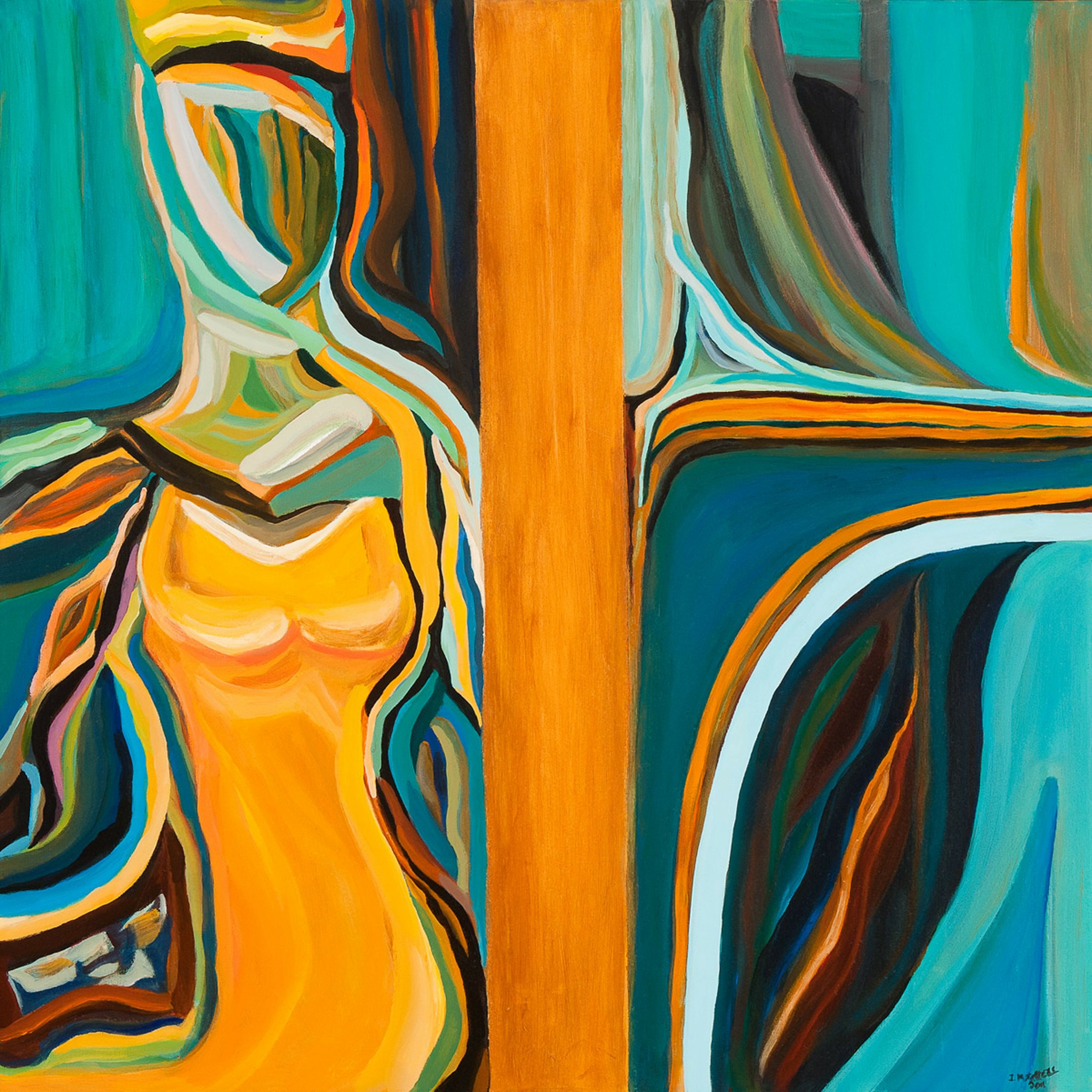
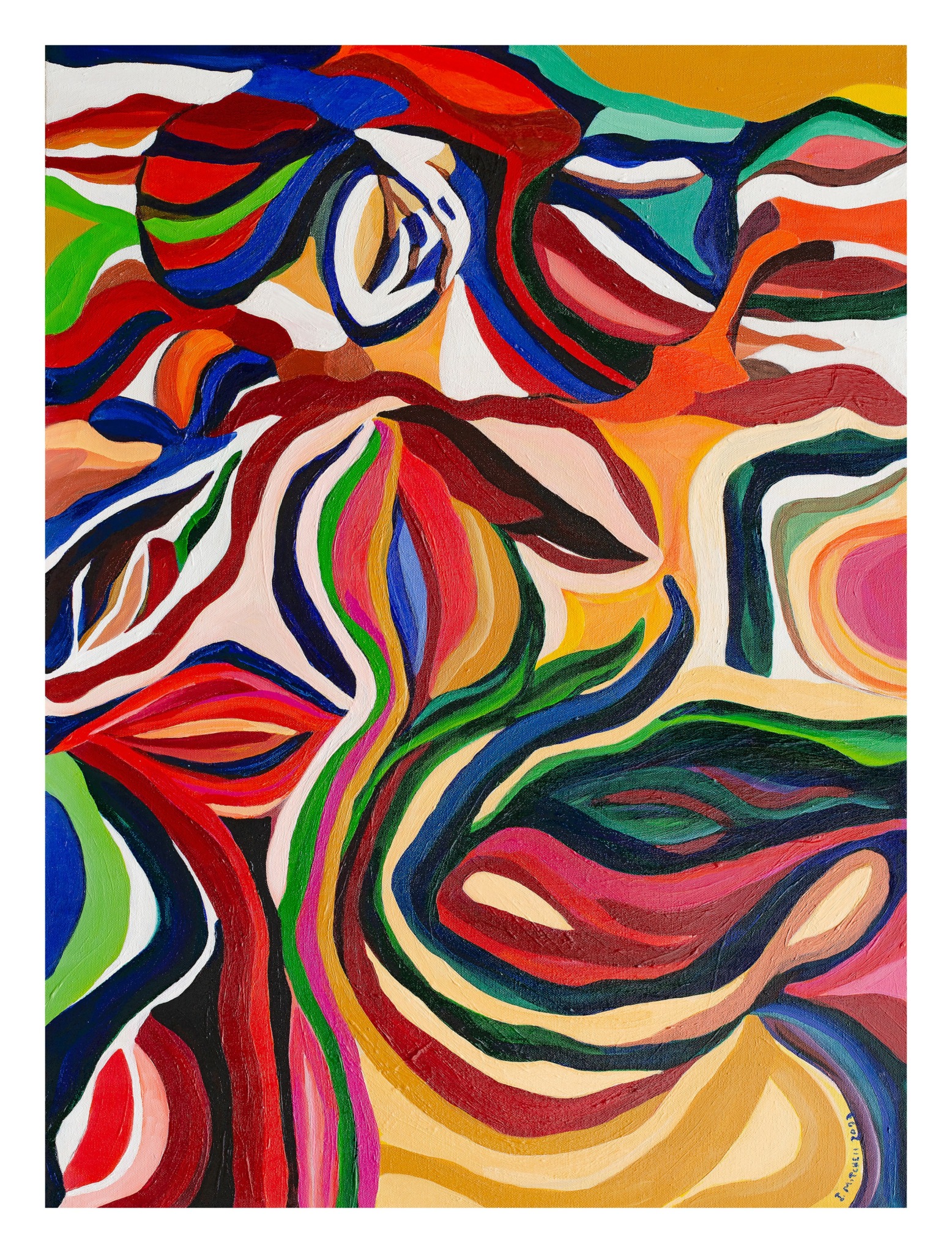
Learning and unlearning are both critical parts of growth – can you share a story of a time when you had to unlearn a lesson?
In my first years as an artist, I felt like I needed to be validated by art groups, galleries, or institutions. I joined spaces where I hoped to find belonging, but often found myself shrinking to fit certain expectations—hoping for a nod of approval that never quite came. Groups and networking are important, but I found I needed not to belong in a more formal way. Yes, I attend openings, sketch nights and art markets and this is where I network with enjoyment without feeling boxed in.
As I kept painting—alone, freely, and honestly—I began to see that the real power was in trusting myself. My art didn’t need permission to exist. It just needed space. Once I let go of waiting for someone to tell me I was “doing it right,” my work became bolder, more alive. And ironically, that’s when people really began to connect with it.
Now, I don’t paint for approval. I paint to express. I paint to connect with the parts of myself that don’t always have words. And I’ve found that by doing that, I end up reaching people in a much more genuine way.

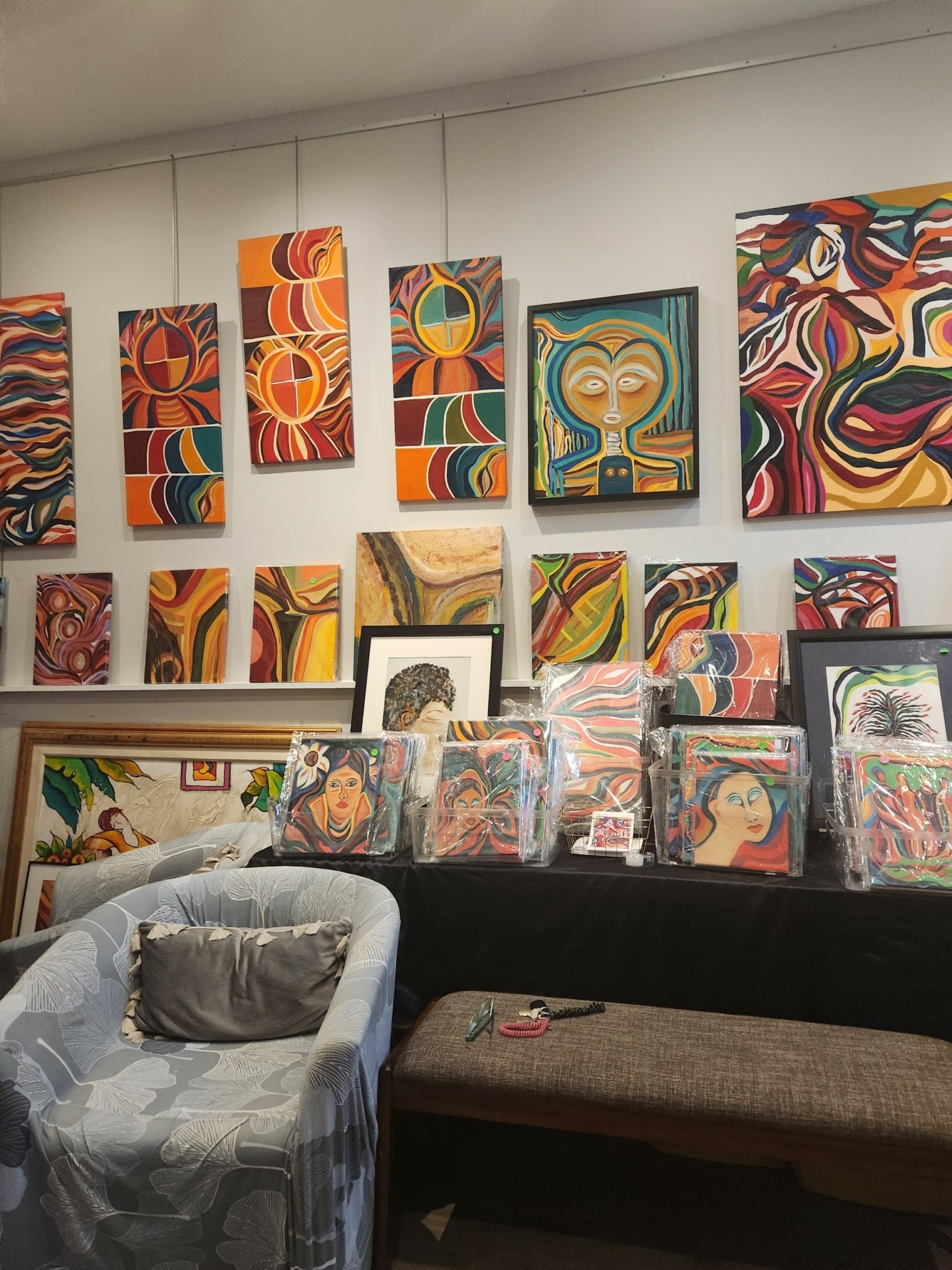
Alright – so here’s a fun one. What do you think about NFTs?
I’ll be honest—I don’t quite understand NFTs.
The whole concept feels a little bewildering to me. I’ve heard people talk about the possibilities—but when it comes down to it, I’m still trying to wrap my head around how it actually works in a way that protects or supports artists like myself.
What I wonder is—where does this leave copyright? Is it still relevant? Or has it been replaced by something I don’t fully understand yet? I’ve always believed in the importance of protecting your work—your ideas, your imagery, your creative voice. And while I know NFTs are supposed to help with that in a digital space, I’m not entirely convinced it makes things simpler. If anything, it feels like there are now *more* layers of uncertainty when it comes to ownership and control.
I’m not against the technology—but I do have questions. How do you really ensure that your work won’t be misused once it’s out there as an NFT? What happens when your image is screen-shoted, copied, or repurposed? Does the blockchain track that too? Or is it just a new marketplace where artists might once again feel pressure to “keep up,” even if they don’t fully understand what they’re stepping into?
I think for artists like me—who came up through physical work, brush to canvas, emotion to form—it can feel overwhelming. Technology moves fast, but our art doesn’t always work that way. I’m still figuring out what feels right for me and my practice. Maybe someday I’ll explore it more, maybe not. But I think it’s okay to ask questions first, to be cautious, and to protect what you’ve built before jumping into something just because it’s trending.
Contact Info:
- Website: https://www.art-ida.com
- Instagram: https://www.instagram.com/idamitchell8431
